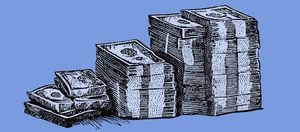As the President of 5th Gear Consulting Helena Hauk assists small to mid-sized businesses with preserving and generating capital, project management, strategic planning, and business development.
The Different SBA Loan Programs Explained
4 min. read
Updated October 27, 2023
Small businesses are a vital part of the U.S. economy, creating jobs and adding new and innovative products and services to the market.
The Small Business Administration of the United States Government exists to support both emerging and growing small businesses by offering services, tools, and resources at affordable rates.
In line with this mission, the SBA offers several loan programs to help those businesses meet demand, acquire needed assets and personnel, and preserve working capital in an undulating market. Those programs supplement traditional commercial loans, giving small businesses more options when it comes time to seek outside financial help.
7(a) Loan Program
We consulted with an expert in this field, Rohit Arora, CEO of Biz2Credit, which is an online credit resource for small businesses and startups, for his thoughts on the different SBA Loan programs.
Regarding 7(a) loans, Arora states that “This type of loan is better for small businesses and startups that are seeking a larger loan. Loans in this class range from $350,000-$5 million.” Of course, for this loan you will need to demonstrate a need and purpose for the amount of money you would be receiving.
In order to be eligible for this program you must be a profitable business with over a million dollars in revenue, located in the US that is not delinquent on any other government debt. Also, the SBA can’t be the first place you go for funding—they require that you’ve used your own assets to the extent that you can.
Microloan Program
“Microloans are part of the SBA Small Business Loan Advantage program; an initiative offered by the SBA that is designed to encourage SBA lenders to make smaller business loans (up to $350,000) and offers a lower interest rate (usually between 6-8 percent annually),” Arora says. He also notes that your business will need to have good credit in order to qualify for this program.
Under the microloan program, the SBA provides small, short-term loans to small businesses, and specifically childcare-related nonprofits. These loans are provided from the SBA to intermediary lenders, and eligibility requirements are determined through that third party lender.
The average loan amount is typically around the $13,000 range, although the loan amounts can be higher, sometimes as much as $350,000, depending on the microloan provider’s parameters. The maximum repayment period is six years.
The SBA sets very specific guidelines for how the microloans can be used. Namely, the loans cannot be used for buying real estate or for paying off existing debt. Instead, the loans can be used to purchase inventory, furniture, and equipment as well as to use as working capital.
CDC/504 Loan Program
The CDC/504 program is the vehicle through which the SBA spurs much of its economic development and public policy goals. CDC stands for Certified Development Company, which are nonprofit organizations that assist people in getting this type of loan. This program provides long-term, fixed-rate loans for the acquisition of major assets such as commercial real estate, equipment, improvements to real estate, and modernization of facilities for energy efficiency.
According to Arora, “typically this type of loan is secured from a participating bank that will cover up to 50 percent of the loan cost for the purpose of the loan,” also noting that these loans are commonly used for construction businesses.
This type of loan is attractive to banks because it is low-risk; the business applying must put a 10 percent downpayment and use the assets purchased from the loan as collateral. The remaining 40 percent of the loan is put up by the CDC.
The maximum loan amount allowed depends on the purpose of the loan and which public policy goal it is satisfying (e.g. rural development, energy efficiency, minorities in business, etc.).
Disaster Loans
This, of course, is a category that people never hope to find themselves in, but circumstances are not always in our control or favor, and the time may come that you need a loan to rebuild your business after a disaster.
The SBA offers such a program that in the instance of an officially declared disaster (such as Hurricane Katrina), the SBA will help you replace your real estate, equipment and other assets for your business, including most nonprofits. Arora adds “borrowers can get a loan of up to $1 million, which is processed through FEMA under the terms of a very low interest rate that typically ranges between 1-4 percent.”
Things to keep in mind
- While the SBA application process is fairly accessible and straightforward, Arora advises those considering this funding option to anticipate a lengthy waiting period, sometimes of up to 14 weeks. If this timeline won’t work for you, this might not be the best option.
- With the exception of the Disaster Loan Program, all programs use third party intermediaries to facilitate funds.
- Both the 7(a) and 504 programs also require a traditional lender and a consultant to assist with packaging and processing the loan. You can check with your local SBA office to learn more and to identify trusted consultants in your area.
- There are certain types of businesses that are simply ineligible for financial assistance from the SBA. To find out if that’s the case for you, check out their list of ineligible businesses.









